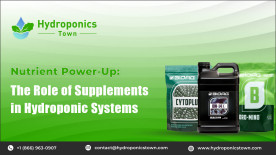Preserving food has been an essential practice throughout human history, enabling societies to store and consume perishable goods beyond their natural shelf life. The significance of food preservation extends beyond mere sustenance, impacting food security, economic stability, and culinary diversity. By employing various preservation methods, communities have safeguarded essential organic nutrients, reduced food waste, and expanded culinary possibilities.
Humidity packs, also known as humidity control packs or moisture-regulating packets, play a vital role in preserving harvested goods by maintaining optimal moisture levels within storage containers. These packs leverage advanced technology to regulate humidity, preventing excess moisture that can lead to spoilage or the loss of essential quality attributes in various food items. Whether used for harvesting and storage, herbs, or other perishable goods, humidity packs are designed to extend shelf life, preserve flavor, and maintain the overall quality of stored items throughout the supply chain.
What are humidity packs, and how do they work?
Humidity packs, also known as desiccant packs or humidity control packs, are small, self-contained pouches or sachets containing a desiccant material designed to regulate and control the relative humidity (RH) levels within a specified environment. These desiccants absorb excess moisture or release moisture as needed to maintain a specific RH level, thereby preventing the degradation or spoilage of stored goods. The packs are commonly used in various industries, including food, pharmaceuticals, electronics, and textiles, to preserve the quality and integrity of sensitive products during storage and transportation.
Humidity packs work through the principles of adsorption and desorption. When the surrounding environment has elevated humidity, the desiccant material within the pack adsorbs the excess moisture, effectively lowering the RH level. Conversely, when the environment is drier, the desiccant releases moisture to maintain an optimal humidity level, thereby stabilizing the storage conditions.
What are the various types of humidity packs available?
| Type | Description | Common Use Cases |
| Silica Gel Packs | Composed of small, porous beads of silicon dioxide. Non-toxic and effective at absorbing moisture. | Food storage, electronics packaging, museum artifacts |
| Salt-Based Humidity packets | Utilize salt-based compounds to control moisture levels. Can both absorb and desorb moisture. | Cigar humidors, pharmaceutical storage, musical instruments |
| Clay Desiccant Pack | Utilize natural clay minerals to regulate humidity. Effective for protecting against moisture-related damage. | Packaging for sensitive electronics, leather goods |
| Activated Charcoal Packs | Use activated charcoal with a large surface area for moisture absorption. Can also help control odors and VOCs. | Closet and shoe storage, car interiors, air purification |
Why is it important to maintain proper humidity levels?
Maintaining proper humidity levels is critical for preserving the quality, shelf life, and integrity of stored goods. Proper humidity control offers several important benefits, including:
Prevention of mold and bacterial growth: Controlling humidity helps to inhibit the proliferation of mold, mildew, and bacteria, which can cause spoilage and compromise the safety of stored goods.
Preservation of quality attributes: By preventing excess moisture, humidity packs help preserve the texture, taste, aroma, and appearance of products, ensuring that they maintain their optimal quality.
Extended shelf life: Maintaining proper humidity levels can significantly extend the shelf life of sensitive products, reducing waste and supporting sustainable practices.
Checkout: Guide to Hydroponic Farming Everything You Need to Know
Benefits of using humidity packs
Here are the benefits of using humidifier packs, specifically focusing on extending the shelf life and preserving the freshness of green harvest hydroponics produce, preventing mold, mildew, and microbial growth, as well as retaining flavor, texture, and nutritional value over time:
| Benefit | Description | Examples |
| Extending shelf life and preserving the freshness of harvested produce Preventing mold, mildew, and microbial growth | - Reduces spoilage - Preserves aroma, color, and appearance - Maintains hydration levels - Enhances food safety - Reduces waste | - Marketable lifespan extension - Appealing visual presentation - Minimized risk of harmful pathogens - Optimization of produce usability - Prevention of wilting and loss of crispness |
| Retaining flavor, texture, and nutritional value over time | - Preserves flavor and texture - Maintains nutritional integrity | - Consistent taste and mouthfeel - Maximized health benefits from consumed goods |
Applications of humidity packs in food storage
In food storage, focusing on storing fruits and vegetables, the importance of humidity control packets in preserving herbs and spices, and using humidity packs for storing grains, nuts, and dried goods:
Use of Integra humidity packs for storing fruits and vegetables
Fruits: Humidity packs are particularly useful for storing fruits like berries, citrus fruits, and apples, which require specific humidity levels to prevent wilting and mold growth. The packs help retain moisture, prevent dehydration, and minimize spoilage, ensuring that the fruits remain fresh for a longer period.
Vegetables: Leafy greens, root vegetables, and delicate vegetables benefit from humidity packs to maintain crispness and freshness. By controlling the humidity levels, these packs slow down the loss of moisture and the onset of decay, helping vegetables last longer without compromising their texture or flavor.
Importance of humidity control in preserving herbs and spices
Flavor preservation: Herbs and spices contain volatile oils that contribute to their flavor and aroma. Proper humidity control prevents these oils from evaporating, preserving the robust flavors and aromas of the herbs and spices over time.
Preventing clumping and spoilage: Humidity can cause herbs and spices to clump together, leading to reduced usability and flavor potency. By maintaining optimal humidity levels, humidity packs prevent clumping and inhibit mold growth, ensuring that herbs and spices remain free-flowing and flavorful.
Application of humidity packs in storing grains, nuts, and dried goods
Grains: Grains such as rice, quinoa, and oats can benefit from humidity packs to prevent moisture absorption and the development of mold. By controlling the humidity in storage containers, humidity packs help preserve the freshness and integrity of grains for prolonged periods.
Nuts: Humidity packs help maintain the ideal moisture content in nuts to prevent them from becoming rancid or stale. By regulating humidity levels, these packs ensure that nuts retain their crunchiness, flavor, and nutritional value during storage.
Dried goods: Items like dried fruits, herbs, and pasta can be susceptible to moisture absorption, leading to texture changes and spoilage. Humidity packs aid in preserving the quality of dried goods by creating a controlled environment that inhibits moisture-related degradation, ensuring their longevity and flavor retention.
Factors to consider when choosing humidity packs
When selecting humidity packs, several factors must be considered to ensure that the chosen packs are suitable for the intended application:
Required humidity level: Depending on the specific storage environment and the moisture sensitivity of the goods, it's essential to choose Integra boost humidity packs that can maintain the optimal humidity level required for the stored items.
Size and capacity: The size of the storage container or area will dictate the number and size of humidity packs required. It's important to select packs with the appropriate capacity to effectively regulate the humidity in the given space.
Desiccant material: Different desiccant materials, such as silica gel, salt-based compounds, clay, or activated charcoal, offer varying benefits and levels of moisture absorption. The choice of desiccant material should align with the specific needs of the stored items.
Packaging and durability: Consider the packaging of the humidity packs to ensure that they are durable and resistant to punctures or leaks. Additionally, packs with breathable packaging can facilitate optimal desiccant performance.
Regulatory compliance: In certain industries, such as food and pharmaceuticals, it's crucial to ensure that the selected humidity packs comply with relevant industry regulations and standards for safety and effectiveness.
Reusability: Some humidity packs are designed to be reusable after regeneration. For certain applications, reusable packs may offer cost savings and environmental benefits.
Refer: 13 Best Plants to Grow Hydroponically 2023
Utilization and care of humidity packs in storage containers
| Step | Description | Examples |
| Select the appropriate pack size | - Choose humidity packs based on container volume and stored items' moisture sensitivity. | - Selecting larger packs for larger containers - Choosing packs with higher absorption capacity for moisture-sensitive items |
| Even distribution | - Place humidity packs evenly within the container to ensure consistent moisture control throughout the enclosed space. | - Distributing packs across the bottom and sides of the container - Avoiding clustering in one area for uniform moisture control |
| Close container securely | - Ensure tight sealing of the container to prevent moisture exchange with the external environment, facilitating effective humidity regulation. | - Securing lid or cover tightly on storage bins or jars - Using sealing tape or clips to maintain closure |
| Check regulatory guidelines | - Follow industry-specific regulations and guidelines for humidity control, especially when storing food or pharmaceutical products. | - Compliance with FDA regulations for food storage organizer - Adherence to pharmacopeial standards for drug storage |
| Inspect and replace regularly | - Regularly check humidity packs for integrity and absorption capacity. Replace packs as needed to maintain optimal humidity control. | - Monthly inspection of packs for signs of leakage or damage - Replacement of packs when absorption capacity is depleted |
| Regenerate reusable packs | - Follow manufacturer's instructions for regenerating reusable packs to restore their moisture absorption capacity after use. | - Placing packs in a designated drying chamber or oven for regeneration - Following the recommended temperature and time settings |
Monitoring humidity levels and replacing packs as needed
Use a hygrometer or humidity indicator card within the storage container to monitor and maintain the desired humidity levels. These tools provide real-time humidity readings, enabling timely intervention if levels fluctuate. Establish a regular schedule for monitoring the humidity levels within harvest storage containers, especially in environments where humidity fluctuations are common. Periodically visually inspect the moisture packets for signs of saturation or depletion. If the packs appear saturated or no longer maintain their form, it is an indicator that they need replacement. Establish predetermined trigger points for replacing 2-way humidity packs based on their expected lifespan and absorption capacity. This can be based on time intervals, visual inspection results, or hygrometer readings. Monitor changes in external environmental conditions (e.g., seasonal variations or climate changes) that could impact internal humidity levels. Adjust the frequency of pack replacement accordingly.
Sustainable solutions for humidity packs
When selecting humidity packs for your storage needs, it's essential to prioritize eco-friendly options to minimize environmental impact. One consideration is opting for packs made from biodegradable materials like natural fibers or compostable polymers. These materials break down over time, reducing waste accumulation and contributing to a more sustainable ecosystem. Additionally, choosing packs with recyclable packaging facilitates easier disposal by allowing the entire pack to be recycled once it's no longer needed.
Recycling and disposal practices for used humidity packs
Upon reaching the end of their usefulness, segregate the desiccant material from the packaging for proper recycling or disposal. Desiccant materials can often be repurposed or recycled separately from the packaging. Check for recycling programs offered by desiccant manufacturers or local waste management facilities that accept used desiccant materials and accessories for recycling. Some locations may have specialized recycling options for desiccants. If using biodegradable or compostable boost humidity packs, consider composting the packaging material in a home composting system or through municipal composting programs where available.
FAQs
Are humidity packs safe for use with organic fruits and vegetables?
Yes, humidity packs are safe to use on organic fruits and vegetables since they assist in maintaining appropriate moisture levels and freshness.
How do I know when to change or recharge humidity packs?
Humidity packs should be replaced when they become saturated or when their moisture-absorbing capacity decreases dramatically. Rechargeable packs can be regenerated according to manufacturer directions.
Can humidity packs alter the flavor or quality of preserved produce?
Humidity packs are intended to protect the freshness and quality of stored food by managing moisture levels, which helps to preserve flavor and texture.


















